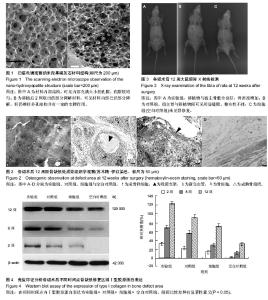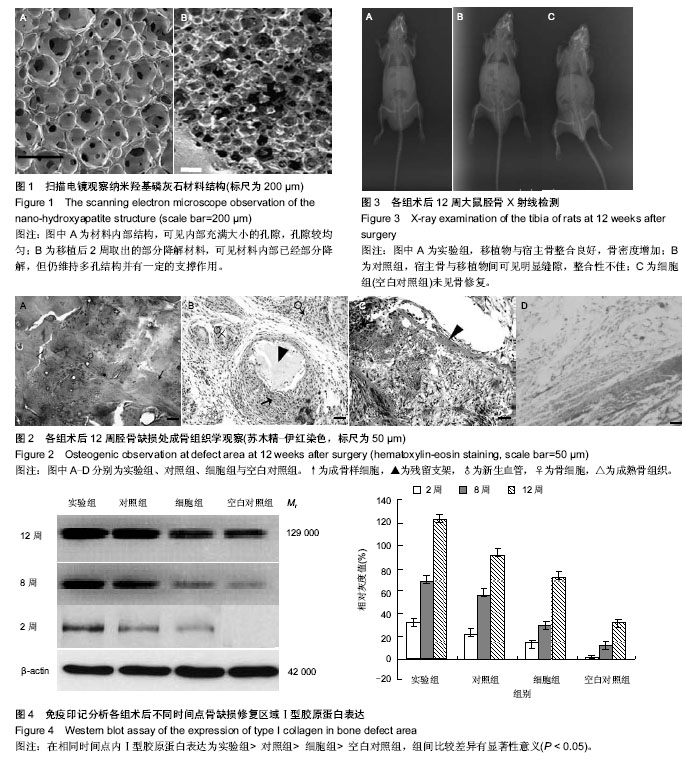| [1] Kneser U,Stangenberg L,Ohnolz J,et al.Evaluation of processed bovine cancellous bone matrix seeded with syngenic osteoblasts in a critical size calvarial defect rat model. Cell Mol Med.2006; 3(10):695-707.
[2] Canter HI,Vargel I,Mavili ME.Reconstruction of mandibular defects using autografts combined with demineralized bone matrix and cancellous allograft.J Craniofac Surg.2007; 18(1): 95-100.
[3] Liu G,Sun J,Li Y,et al.Evaluation of partially demineralized osteoporotic cancellous bone matrix combined with human bone marrow stromal cells for tissue engineering: an in vitro and in vivo study.Calcif Tissue Int.2008;83(3):176-185.
[4] Isaksson H,Tolvanen V,Finnilä MA,et al.Long-term voluntary exercise of male mice induces more beneficial effects on cancellous and cortical bone than on the collagenous matrix. Exp Gerontol.2009;44(11):708-717.
[5] Løken S,Jakobsen RB,Arøen A,et al.Bone marrow mesenchymal stem cells in a hyaluronan scaffold for treatment of an osteochondral defect in a rabbit model. Knee Surg Sports Traumatol Arthrosc.2008;16(10): 896-903.
[6] Zioupos P,Cook R,Coats AM.Bone quality issues an matrix properties in OP cancellous bone.Stud Health Technol Inform. 2008;133:238-245.
[7] Yamasaki T,Deie M,Shinomiya R,et al.Transplantation of meniscus regenerated by tissue engineering with a scaffold derived from a rat meniscus and mesenchymal stromal cells derived from rat bone marrow. Artif Organs.2008;32(7):519-524.
[8] Espitalier F,Vinatier C,Lerouxel E,et al.A comparison between bone reconstruction following the use of mesenchymal stem cells and total bone marrow in association with calcium phosphate scaffold in irradiated bone.Biomaterials.2009;30(5): 763-769.
[9] Xu C,Su P,Wang Y,et al.A novel biomimetic composite scaffold hybridized with mesenchymal stem cells in repair of rat bone defects models.J Biomed Mater Res A.2010;95(2):495-503.
[10] Venugopal J,Prabhakaran MP,Zhang Y,et al.Biomimetic hydroxyapatite- containing composite nanofibrous substrates for bone tissue engineering.Philos Transact A Math Phys Eng Sci. 2010;368(1917):2065-2081.
[11] Melton JT,Wilson AJ,Chapman-Sheath P,et al.TruFit CB bone plug: chondral repair, scaffold design, surgical technique and early experiences.Expert Rev Med Devices.2010;7(3):333-341.
[12] Verma D,Katti KS,Katti DR.Osteoblast adhesion, proliferation and growth on polyelectrolyte complex-hydroxyapatite nanocomposites.Philos Transact A Math Phys Eng Sci.2010; 368(1917):2083-2097.
[13] Murphy CM,O'Brien FJ.Understanding the effect of mean pore size on cell activity in collagen-glycosaminoglycan scaffolds. Cell Adh Migr.2010; 4(3):321-329.
[14] Wang L,Fan H,Zhang ZY,et al.Osteogenesis and angiogenesis of tissue-engineered bone constructed by prevascularized β-tricalcium phosphate scaffold and mesenchymal stem cells. Biomaterials.2010;31(36):9452-9461.
[15] Arrington ED,Smith WJ,Chambers HG,et al.Complications of iliac crest bone graft harvesting.Clin Orthop.1996;329(2): 300-309.
[16] Vacanti JP,Morse MA,Saltzman WM,et al.Selective cell transplantation using bioabsorbable artificial polymers as matrices.J Pediatr Surg.1988 23(1 Pt 2):3-9.
[17] Malicev E,Radosavljevic D,Velikonja NK.Fibrin gel improved the Spatial Uniformity and Phenotype of Human Chondrocytes Seeded on Collagen Scaffolds.Biotechnol Bioeng.2007;96(2): 364-370.
[18] Guo X,Park H,Young S,et al.Repair of osteochondral defects with biodegradeable hydrogel composites encapsulating marrow mesenchymal stem cells in a rabbit model.Acta Biomaterialia.2010;6:39-47.
[19] Hoemann C,Sun J,McKee M,et al.Chitosan-glycerol phosphate/blood implants elicit hyaline cartilage repair integrated with porous subchondral bone in microdrilled rabbit defects.Osteoarthritis Cartilage.2007;15:78-89.
[20] Janjanin S,Li WJ,Morgan MT,et al.Mold-Shaped, Nanofiber Scaffold- Based Cartilage Engineering Using Human Mesenchymal Stem Cells and Bioreactor.J Surg Res.2008; 149:47-56.
[21] Espitalier F,Vinatier C,Lerouxel E,et al.A comparison between bone reconstruction following the use of mesenchymal stem cells and total bone marrow in association with calcium phosphate scaffold in irradiated bone.Biomaterials.2009;30(5): 763-769. |

